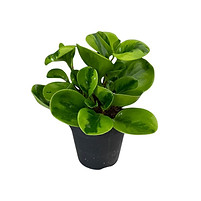Peperomia
Peperomia plants are a diverse and fascinating group of tropical plants, belonging to the Piperaceae family. With over 1,000 known species, Peperomias come in a variety of shapes, sizes, and colors, making them popular choices for indoor gardening enthusiasts. These plants are native to tropical and subtropical regions of Central and South America, as well as parts of Africa and Southeast Asia
Find your perfect plant, shop by brand, variety, size, or collection via our Online Ordering Portal.

Peperomia
lemon & lime

Peperomia
rocca verde

Peperomia
obtusifolia

Peperomia
obtipan green
Exclusive
Peperomia PBR Range

Peperomia
brasila

Peperomia
burbella

Peperomia
chocolat

Peperomia
costa rica

Peperomia
milano
_1.jpg)
Peperomia
moonlight

Peperomia
mystique

Peperomia napoli nights

Peperomia
green bubble
.jpg)
Peperomia
greyhound

Peperomia
melon peru

Peperomia
mendoza

Peperomia
COMING SOON

Peperomia
optian bicolor

Peperomia
piccolo banda

Peperomia
quito

Peperomia
rana verde

Peperomia
red burbella

Peperomia
red canyon

Peperomia
red tundra

Peperomia
rocca vivace

Peperomia
rosso

Peperomia
royal princess

Peperomia
santorini

Peperomia
sarcophylla

Peperomia
sunrise

Peperomia
vestita

Peperomia
COMING SOON
Appearence:
Peperomia plants are known for their attractive foliage, which varies widely among different species and cultivars. The leaves can be glossy or matte, thick or thin, and come in various shapes such as heart-shaped, oval, or lanceolate. Some Peperomia species have textured or patterned leaves, while others feature variegation with contrasting colors. The foliage may be solid green, or it may exhibit shades of red, purple, silver, or cream, adding visual interest to these plants.
Indoor and Outdoor Use:
Peperomia plants can be grown both indoors as houseplants and outdoors in suitable climates. When grown indoors, they make excellent statement plants, adding a touch of tropical elegance to any interior space. Outdoors, they can be used in tropical or subtropical garden landscapes, as specimen plants or as part of lush foliage arrangements.
Growth Habit:
Peperomia plants exhibit a range of growth habits, from compact rosettes to trailing vines. Some species grow upright, while others have a spreading or cascading growth habit. The size of Peperomia plants can vary significantly, with some staying small and compact, making them ideal for terrariums or small spaces, while others can grow larger and become statement plants in larger containers.
Care and Maintenance:
Peperomia plants are relatively low-maintenance and do not require frequent fertilization. Feed them with a balanced, water-soluble fertilizer diluted to half strength during the growing season (spring and summer) every 4-6 weeks. Pruning may be necessary to maintain the plant's shape and remove any dead or yellowing leaves. Propagation of Peperomia plants is straightforward and can be done through stem or leaf cuttings placed in soil or water.
